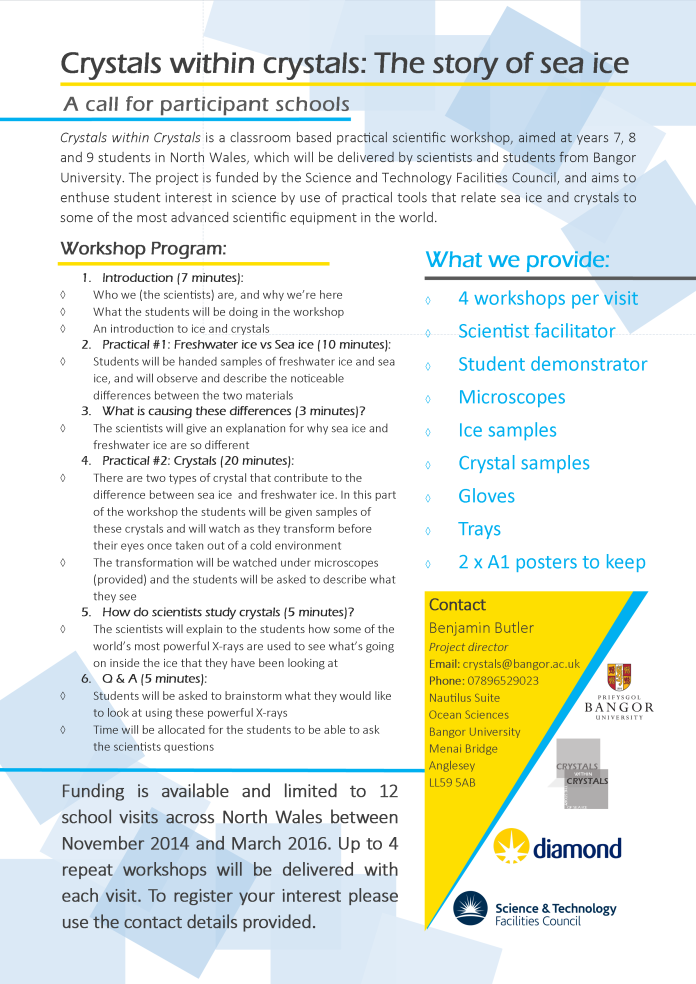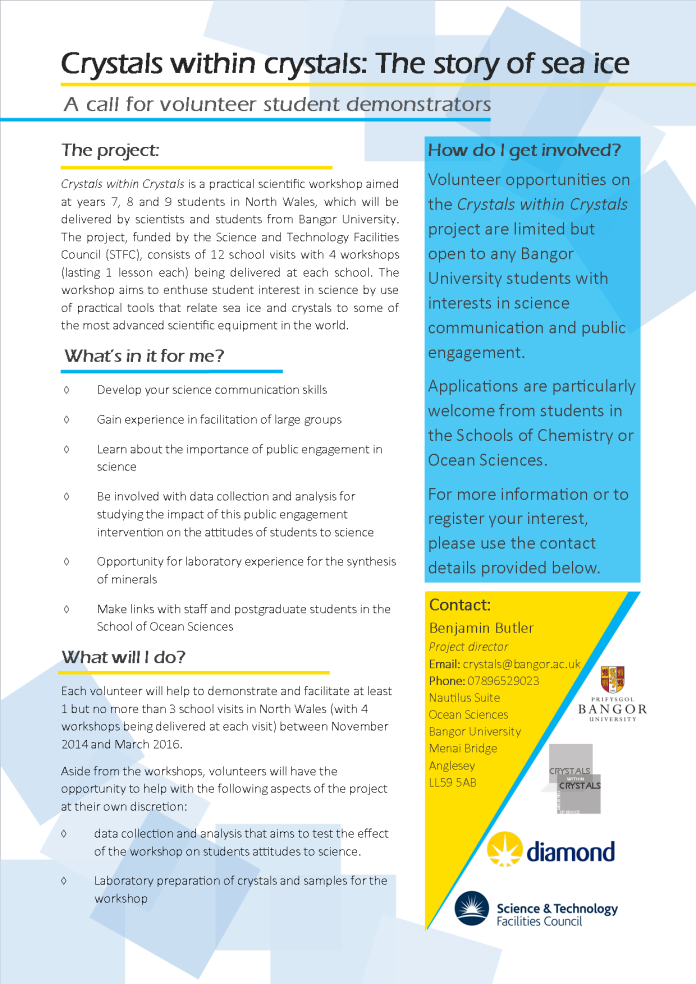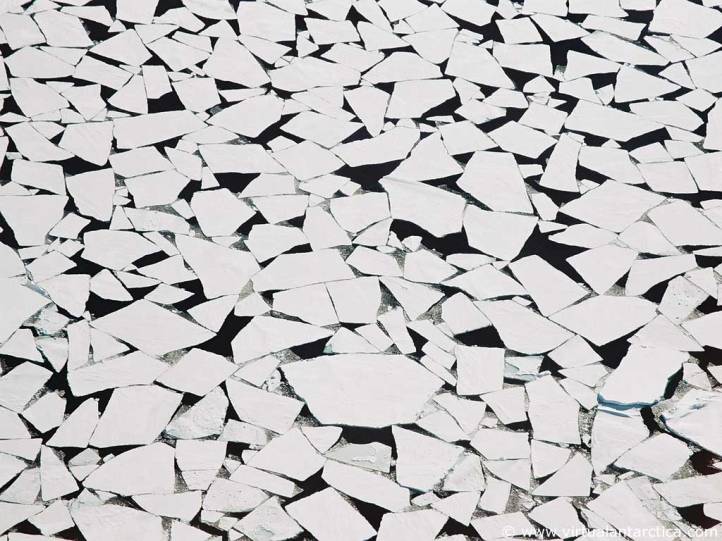For the sake of the context of the rest of this site, it’s worth just giving a brief outline of what the ‘Crystals within Crystals: The story of sea ice’ workshop will consist of. Each workshop will last for 1 school lesson, and we aim to deliver 4 of these with each school visit.
1. Introduction (7 minutes):
- Who we (the scientists) are, and why we’re here
- What the students will be doing in the workshop
- An introduction to ice and crystals
2. Practical #1: Freshwater ice vs Sea ice (10 minutes):
- Students will be handed samples of freshwater ice and sea ice, and will observe and describe the noticeable differences between the two materials
3. What is causing these differences (3 minutes)?
- The scientists will give an explanation for why sea ice and freshwater ice are so different
4. Practical #2: Crystals (20 minutes):
- There are two types of crystal that contribute to the difference between sea ice and freshwater ice. In this part of the workshop the students will be given samples of these crystals and will watch as they transform before their eyes once taken out of a cold environment
- The transformation will be watched under microscopes (provided) and the students will be asked to describe what they see
5. How do scientists study crystals (5 minutes)?
- The scientists will explain to the students how some of the world’s most powerful X-rays are used to see what’s going on inside the ice that they have been looking at
6. Q & A (5 minutes):
- Students will be asked to brainstorm what they would like to look at using these powerful X-rays
- Time will be allocated for the students to be able to ask the scientists questions



